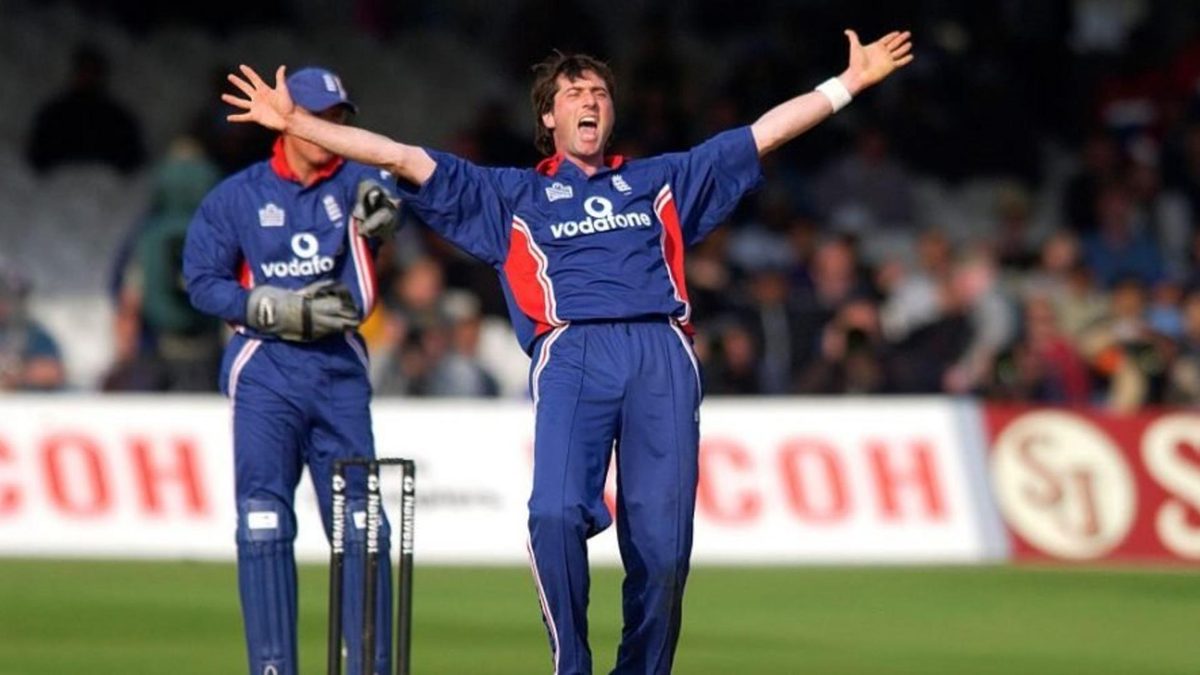
From the reliable and innovative Paul Nixon to the staggeringly quick Duncan Spencer, here are ten English cult heroes of the Nineties and Noughties.
First published in 2008
First published in 2008
10. Paul Nixon – Leicestershire and Kent (1989 – 2011)
He may look older than your granddad, but there is no more vital a force in county cricket than Paul ‘Nico’ Nixon. Originally selected by the Foxes as a stopper-batsman, the gloriously unhinged Carlisle-born left-hander has progressed to the point of now being regarded as one of the country’s most reliable and innovative cricketers, good enough to make an impact at international level. When most players have well and truly reached for the pipe and slippers, Nixon keeps churning out performances that defy age, convention and occasionally belief.
[caption id=”attachment_171570″ align=”alignnone” width=”800″]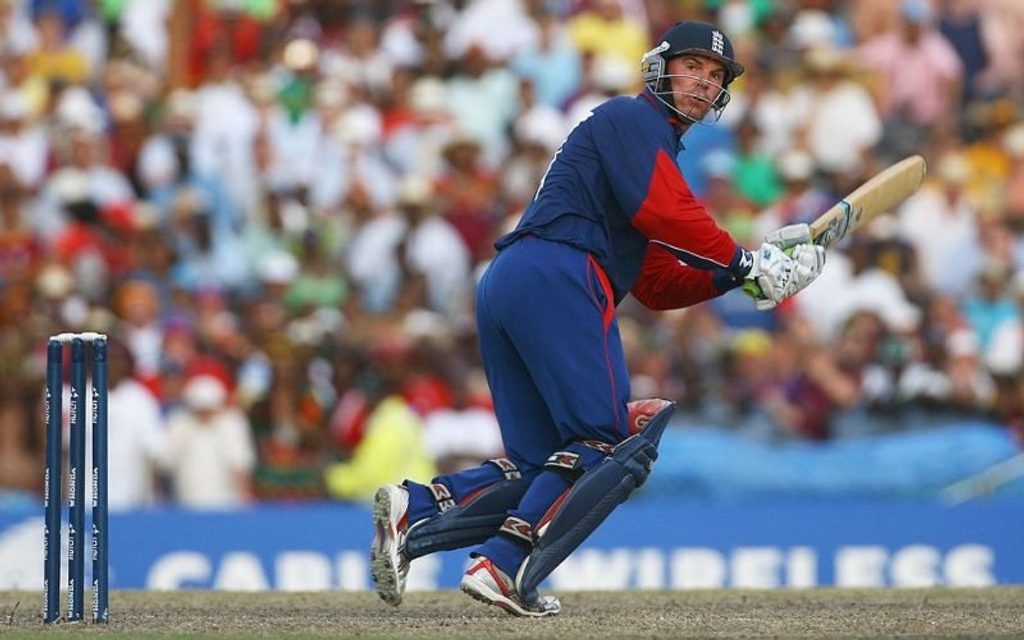 Paul Nixon during his crucial 38-run cameo in the 2007 World Cup fixture against the West Indies[/caption]
Paul Nixon during his crucial 38-run cameo in the 2007 World Cup fixture against the West Indies[/caption]
9. Peter Martin – Lancashire (1989-2004)
A tall gangly youth who grew into a tall gangly adult, Peter ‘Digger’ Martin, of the ruddy-cheeked appearance and coat-hanger-in-the-shirt gait, was once Lancashire’s favourite ultra-reliable, tongue-spouting seamer. This right-arm swing bowler played eight Tests for England between June 1995 and August 1997, faring reasonably well without pulling up any trees. His standards rarely slipped on the county circuit, where he proved pivotal in Lancashire’s one-day success during his time. Knee trouble saw him leave the game in 2004, in the process punching a hole in the county’s new-ball attack. His durability and steadiness proving impossible to replicate.
[caption id=”attachment_171572″ align=”alignnone” width=”800″]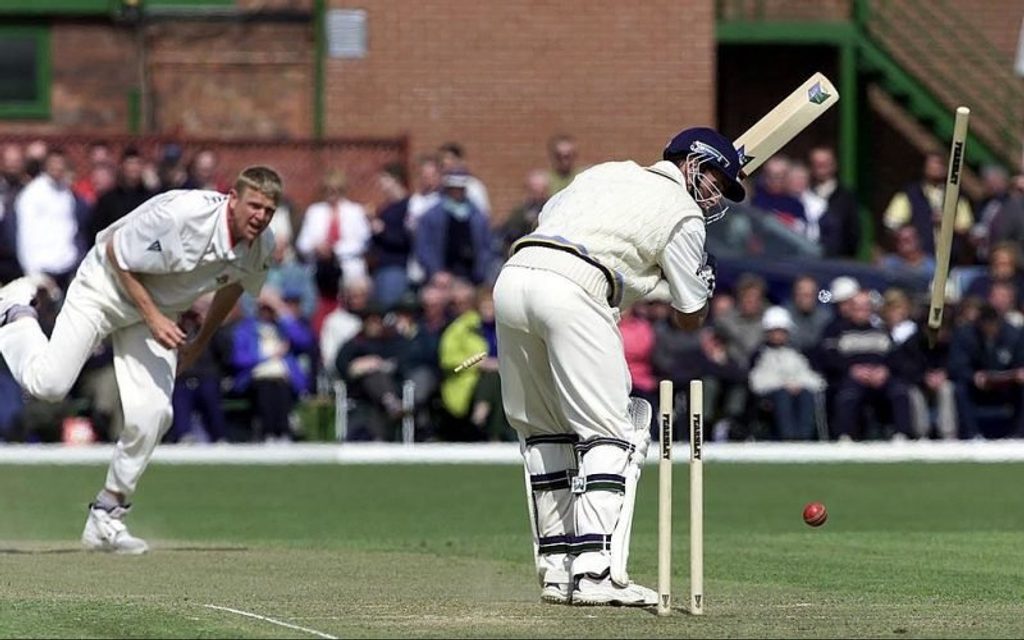 Peter Martin sends Michael Vaughan’s off stump cartwheeling in Aigburth, 2001[/caption]
Peter Martin sends Michael Vaughan’s off stump cartwheeling in Aigburth, 2001[/caption]
8. Dermot Reeve – Sussex, Warwickshire, Somerset (1983-1996)
No one did more to modernise day game in the UK than former Sussex, Warwickshire and Somerset all-rounder, Dermot Reeve – you just ask him…
Not someone to forget to push himself forward, Reeve went from being a player regarded by the mighty Imran Khan as the worst player in the Sussex side of the Eighties, to something of a living legend with Warwickshire. By the time his knees gave out, after a few too many slog-sweeps, knee slide retrieves and phantom seamers, he had evolved into the single most important figure behind the Bears’ domination of domestic cricket in the Nineties.
[caption id=”attachment_171574″ align=”alignnone” width=”800″]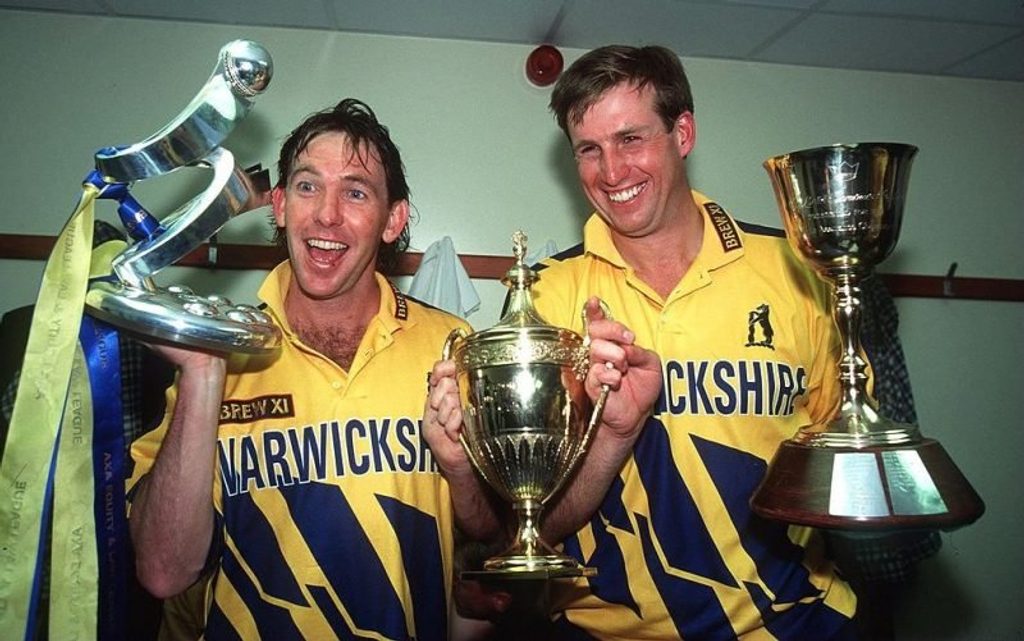 Triple joy! Dermot Reeve (left) and Tim Munton celebrate Warwickshire’s treble in 1994 – the County Championship, Sunday League and Benson and Hedges Cup[/caption]
Triple joy! Dermot Reeve (left) and Tim Munton celebrate Warwickshire’s treble in 1994 – the County Championship, Sunday League and Benson and Hedges Cup[/caption]
One of Wisden’s five cricketers of the year in 1996, and love him or loathe him, Reeve proved to be a thoroughly entertaining TV commentator and after-dinner speaker. All seemed to be going well until his dalliances with hookers and cocaine were exposed in the Sunday redtops, seeing him quit the ‘high life’ for an altogether quieter existence in rural New Zealand, where he now does a bit of commentary.
7. Ronnie Irani – Lancashire and Essex (1990-2007)
Another three-Test veteran (as was Dermot Reeve), Irani’s force of personality saw him rise from the ranks of the county game to sit as something of an elder statesman by the end of his tenure as captain of Essex. Originally a medium pace bowler and handy number six, as his body failed him, Irani gave up the trundling to score runs by the boatload whether batting at number four or opening in the one-day game. A sabre-rattling, quote-giving, self-proclaimed man of the people, Irani now works for TalkSport where his ever-populist banter sees him trading bluster with Alan Brazil.
6. Matthew Fleming – Kent (1989-2002)
From Eton to the Royal Green Jackets to captaining Kent, Matthew Fleming’s rise nods more in the direction of the 1890s than the 1990s. With an individual take on dress code, a bits-and-pieces method of play utilising sweeps, slower balls and diving saves in the field, all conducted with a face as red as a baboon’s arse, ‘Jazzer’ cut a strikingly unorthodox figure during his 219-match first-class career. Such was Fleming’s prowess in the one-day game that he turned out 11 times for England, most successfully for Adam Hollioake’s Akai-Singer Champions Trophy-winning side in 1997. He remains a committed servant of the game as an MCC committee member, recently conducting a fact-finding mission for the club to ascertain how it might develop cricket in Afghanistan.
“The new appointment, and a squad packed full of bits-and-pieces cricketers, was greeted with suspicion and, by some, derision.”
Who remembers this? 😲https://t.co/8qsAfAwTn4
— Wisden (@WisdenCricket) August 24, 2020
5. Alan Mullally – Leicestershire and Hampshire (1987-2005)
Languid to the point of appearing asleep, ‘Al Mullall’ was a popular figure on the county circuit during stints with Leicestershire and latterly Hampshire. Overly-tall yet pacey, his left-arm swingers made Mullally one of the domestic game’s most threatening new ball exponents. In partnership with any number of quality seamers at Grace Road, Mullally, born in Southend-on-Sea but raised in Perth, Western Australia, won two Championship pennants with the Foxes at the back end of the Nineties.
[caption id=”attachment_171577″ align=”alignnone” width=”800″]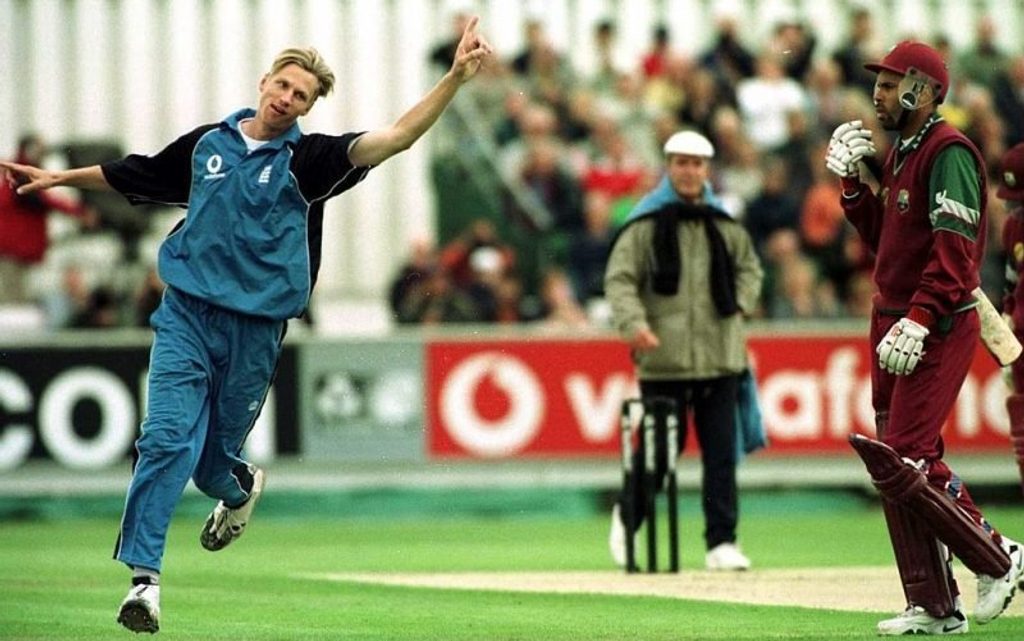 Alan Mullally took 121 international wickets for England[/caption]
Alan Mullally took 121 international wickets for England[/caption]
Such was his pedigree as a one-day bowler, he was at one point ranked number two in the world. Yet despite his prowess with the ball, Mullally is possibly most affectionately remembered for his exploits with the bat. His style owed little to convention, even less to talent. His 16 runs flayed from the bowling of Glenn McGrath during England’s 12-run victory over Australia at Melbourne in 1998/99 has its place in history as one of the truly inspired tailender innings.
4. Michael Roseberry – Middlesex and Durham (1986-2001)
Michael ‘Mickey’ Roseberry, the eldest son of fabled North-eastern business tycoon, Mat Roseberry, was a powerfully built right-hander who formed a hugely successful opening partnership with West Indies’ Desmond Haynes for Middlesex in the early Nineties. A friendly off-field persona masked by a durable approach to his batting. Predominantly a front foot player, his run-scoring feats saw him tour with England A in 1992/93 on the back of two Championship titles with Middlesex in 1990 and 1992.
[breakout id=”0″][/breakout]
But as Haynes departed, so went the confidence borne of opening the innings with one of the game’s greats Roseberry’s career floundered, with him heading north to his native Durham for a few modest summers. He returned to Lord’s for a swansong, but the best years were behind him. A good player and a good guy, whose company is still enjoyed by many during big matches at HQ.
3. Richard Stemp – Leicestershire, Nottinghamshire, Worcestershire and Yorkshire (1990-2002)
Richard Stemp did no harm to the perception that all slow left-armers are a little bit tapped in the head. Throughout his colourful four-club career ‘The Sheriff’ was rarely out of trouble with officials, umpires, opposition, team-mates or administrators alike. With a lifestyle that reportedly involved little sleep, he came terrifyingly close to playing a Test in 1994 when selected as part of England’s squad to face New Zealand at Trent Bridge. He now plays for Northampton Saints alongside All Out Cricket columnist, Alec Swann.
“Still holding sway over the spirit of the game and its laws, these three initials still carry some weight.”
From VVS to MCC – @rich_thomas99 (RHT) takes us through the most prominent initials and acronyms in the game.https://t.co/UCU5ZL3DVK
— Wisden (@WisdenCricket) August 18, 2020
2. Duncan Spencer– Kent and Sussex (1993-2006)
He may have looked a bit short side, but there was nothing lacking in the pace ‘Funky Dunky’ Spencer generated. Australian-schooled but born in Nelson, Lancashire, Spencer burst onto the domestic scene by bowling some of the fastest spells seen on the county grounds of England in the 1990s. Staggeringly quick, yet unerringly erratic, Spencer reportedly found bowling tiresome compared to his love of batting. Which, for his team-mates who witnessed his 16-match first-class career, must have proven something of a disappointment.
[breakout id=”1″][/breakout]
He dropped out of the county game after suffering with back trouble, but not before none other than Sir Viv himself had rated Spencer the fastest bowler he had ever faced. He re-emerged in 2006 when playing for Sussex on two occasions before helping Buckinghamshire to reach the Minor Counties final in the same year. All of which was achieved after previously testing positive for the banned substance Nandrolone in 2001 and receiving an 18-month ban.
1. Andre van Troost – Somerset (1991-1998)
Standing a full 13 feet tall at the crease, wild of hair and long of limb, the erstwhile Flying Dutchman bowled balls so fast they barely stayed within the confines of Taunton, let alone within the conventions of line and length.
Electrifyingly fast, van Troost famously broke his hand during a second XI match for the county when his arm swing after bowling another thunderbolt delivery was so elongated, excessive and committed, that it smashed into the pitch, snapping a bone.
Former West Indies skipper Jimmy Adams had his cheekbone shattered by van Troost during a tourist match in the West Country, where a chequered and largely misunderstood stint saw Shiedom-born van Troost’s ability marvelled all though rarely maximised. Today, he still plays club cricket in his native Holland, turning out as a batsman in his club’s third XI, aged 35.








